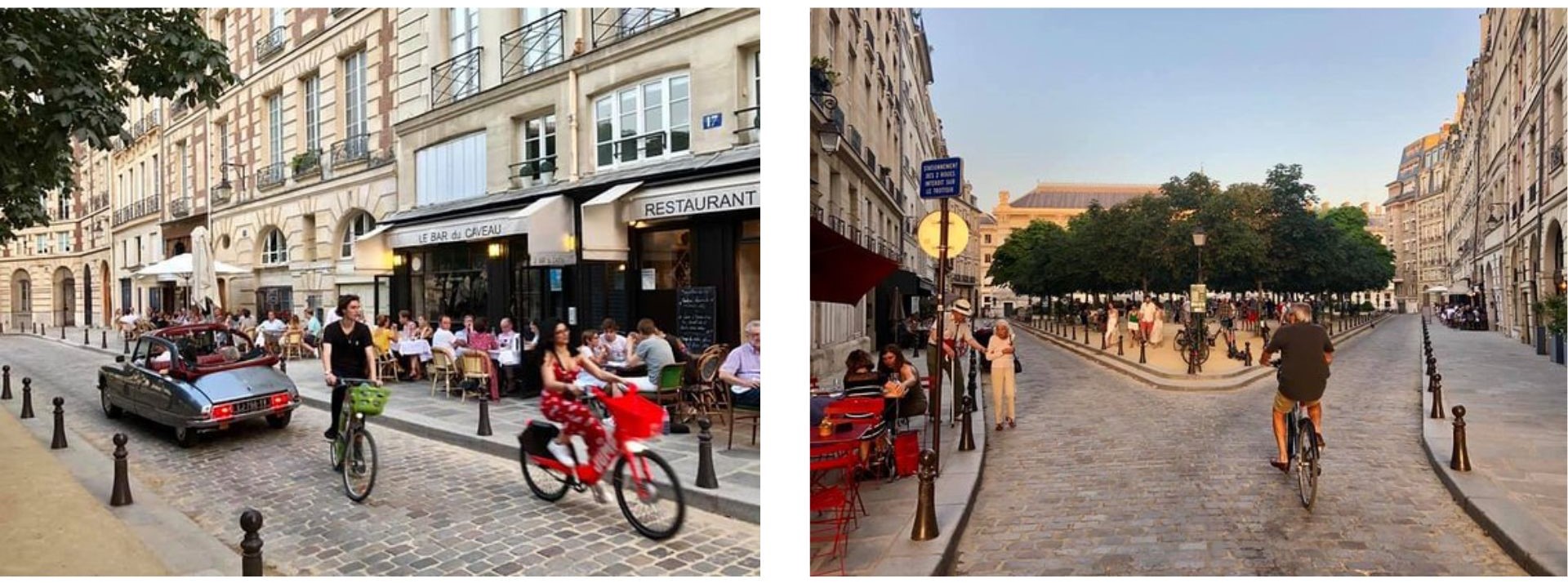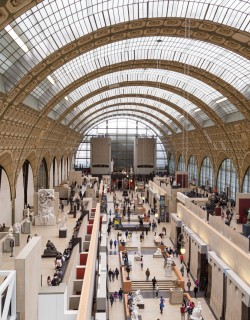“Un café, s’il vous plait.” These simple words are practically an overture to some of the most pleasurable and memorable experiences you’ll have while visiting the City of Lights. There is so much to do in Paris that it can all be a bit overwhelming. Setting aside the guide book, the checklist, the itinerary, the sight-seeing schedule and taking time just to sit and sip can be an effective aid in digesting everything you’ve already eaten with your eyes. In fact, it is so deliciously delightful that you will likely weave the habit into the fabric of your daily routine once you return home.

A bit of background…
By the turn of the 17th century, this beverage, long popular in the Islamic world, was making its way around the great cities of northern Europe and, notably, Venice. Pope Clement VIII himself, against the advice of his counselors – who mistrusted its Arab origins – upon sampling it decided to “take the sting out of the devil’s tail” and bless it rather than curse it. He considered it a shame to leave such a pleasure just to the “infidels”.
Coffee’s first appearance in the Hexagon was in 1644, in the southern port city of Marseille, having been brought back home by a French trader following a business trip to Constantinople. It was not until 1669 that coffee was finally served at the court of Louis XIV. A certain Soliman Aga, believed to be the emissary of the Ottoman Sultan, hosted spectacular soirées at his Parisian residence for a solid nine months. At a time when the exotic East was all the rage in Paris, Aga – a tall, handsome stranger if ever there was one – and his receptions, where coffee was served with all the Turkish trappings, were a resounding success in high society. Though the king had determined not to receive the man for understandable political reasons (the French ambassador to the Sultan had only recently been first imprisoned, then sent packing), his curiosity got the better of him and Aga was called to attend the king at court.
Though the event was an unmitigated disaster – what they had there was a failure to communicate – there were two important results: the commissioning of a play that included a comic spoof of Turkish presumption, Molière’s brilliant Le Bourgeois gentilhomme; and the introduction of coffee to the court. Though the king eventually eschewed it, coffee had caught on with other members of the nobility, and the next king, Louis XV, was a big fan. The fact that coffee was très cher contributed to making it très chic.
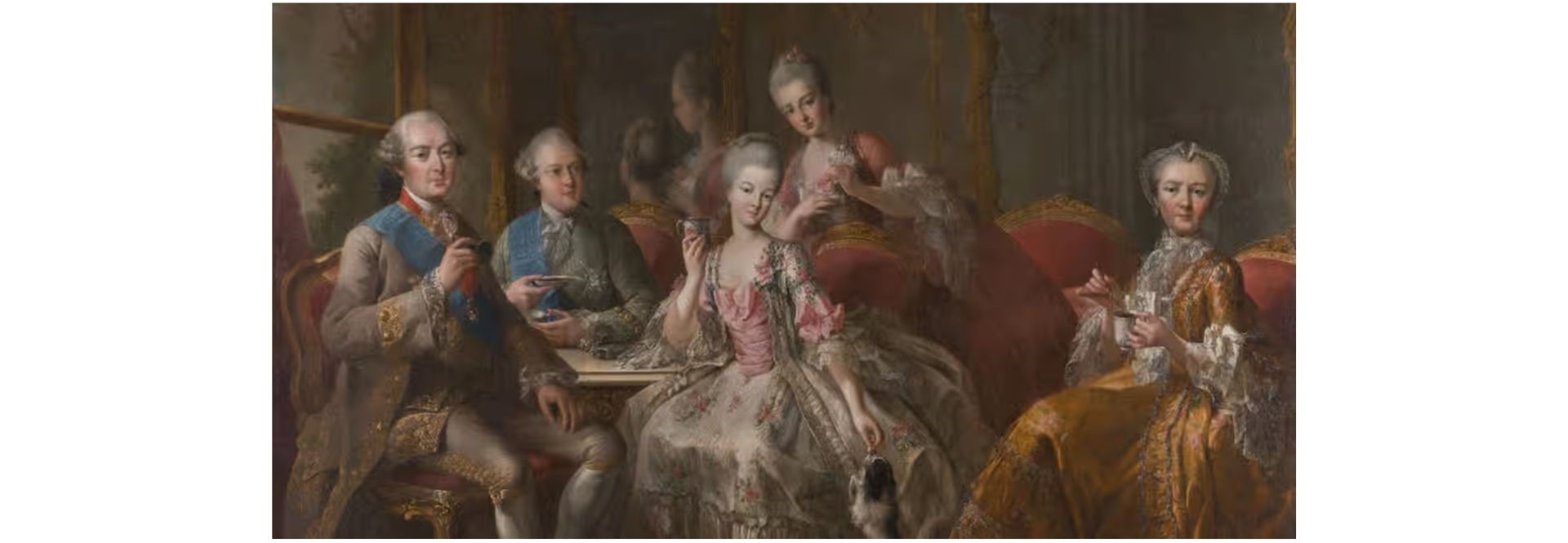
Shortly thereafter, an Armenian named Gregoire opened a coffee house near the Comédie Française. When the theater moved to its current location in 1680, Grégoire moved with it, opening his new establishment just across the street. Several years later, a young entrepreneurial Sicilian by the glorious and slightly intimidating name of Francesco Procopio dei Coltelli (dei Coltelli literally means of the knives) bought Grégoire out, and in 1689 he reopened the café, lavishly decorated and rebaptized Le Procope. It quickly became the Parisian café littéraire par excellence. Here Diderot, Voltaire and Rousseau commiserated with their colleagues; here Benjamin Franklin hashed out his project for the alliance between France and the nascent United States of America; here Verlaine, Musset and George Sand tipped their tasses and penned their poems and prose.

This would continue through the 20th century in legendary spots like the Café de la Paix near the spectacular Second-Empire opera house and, in the Left Bank neighborhood of Saint-Germain, Café de Flore, Les Deux Magots and Brasserie Lipp. It was here on the Rive Gauche, west of the Sorbonne and the Latin Quarter, that the great French (and not just!) writers and thinkers of the 20th century sat and smoked and sipped, often through entire chunks of a day and well into dinnertime and the late evening. The artists and intellectuals who now loom so large in our collective consciousness, recognized and appreciated even in their own day, often lived modestly on a shoestring budget. With no air conditioning, their small apartments were saunas in the summer, and heating was expensive in the winter. Passing many of their waking hours in cafés was not only a way of interacting with myriads of likeminded people but also a means of conserving cash.
In the Roaring 20s, the young men and women of the Lost Generation – Ernest Hemingway, Ezra Pound, Djuna Barnes and James Joyce to name a few – explored and experimented with new ideas for remaking an old world at cafés stretched along the Boulevard Montparnasse: Le Dôme, La Rotonde, Le Select, La Coupole. Though Gertrude Stein typically hosted the younger artist and writers at the home she shared with her partner Alice Toklas near the Luxembourg Gardens, she was known to pass many an afternoon in their company at La Closerie des Lilacs. This was also were Hemingway wrote a hefty portion of The Sun Also Rises and where, at F. Scott Fitzgerald’s request, he read through the manuscript of The Great Gatsby.
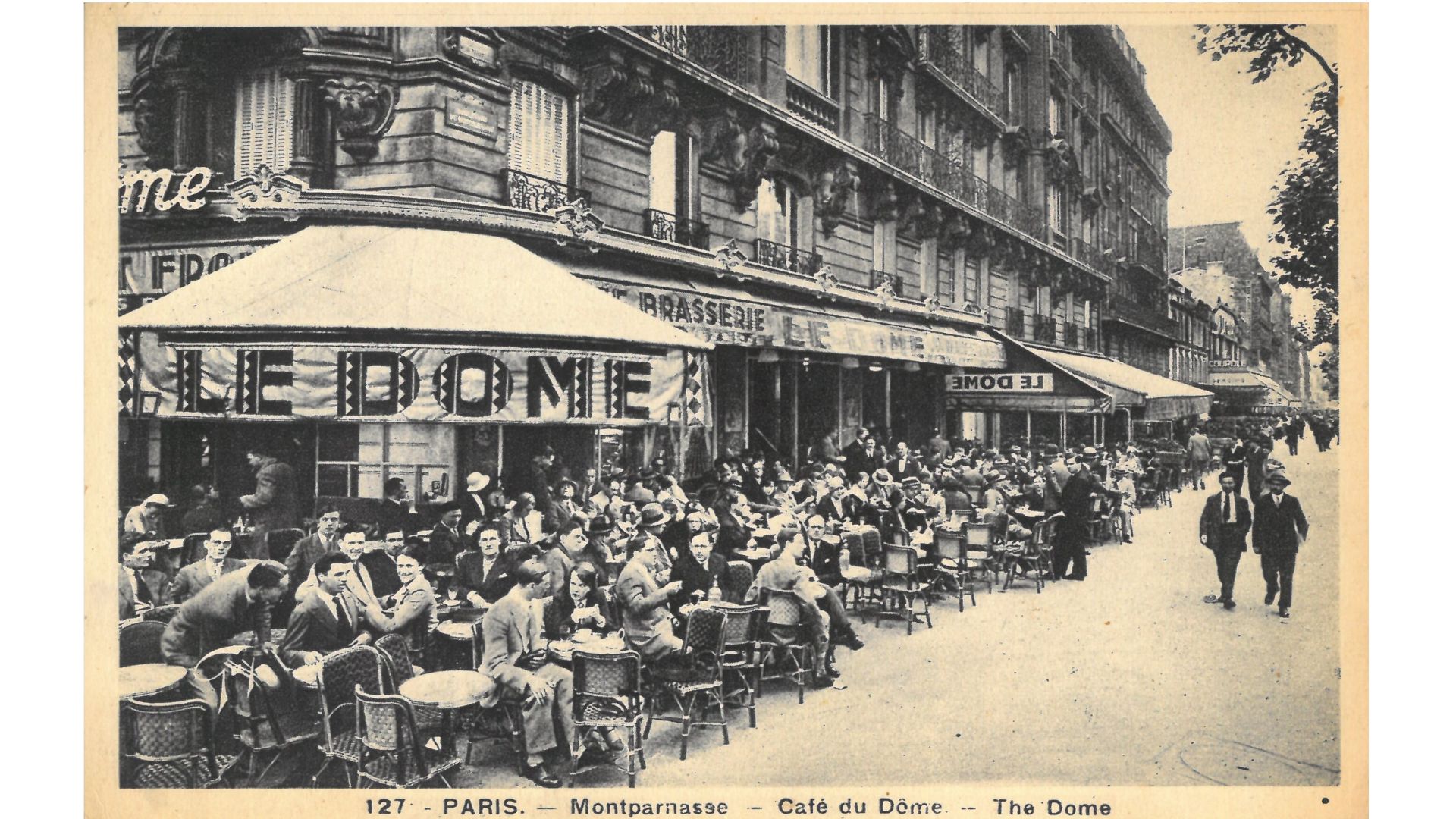
In the 30s and 40s, Les Deux Magots – referring to the pair of Chinese figures observing the goings-on, cheeky as you please, from their central pilaster – was where you would often find Picasso and the power couple of Simone de Beauvoir and Jean-Paul Sartre and later Albert Camus, author of L’Étranger, (The Stranger), required reading for every 3rd-year student of French around the world.
During the Occupation, de Beauvoir and Sartre migrated to the nearby Café de Flore. Here’s how Sartre described the situation: “We are completely settled there; from nine o’clock in the morning until midday, we work, we eat, and at two o’clock we come back and chat with friends until eight o’clock. After dinner, we see people who have an appointment. That may seem strange to you, but we are at home.”
Today these spots – especially the Holy Trinity of the nearly adjacent Les Deux Magots, Café de Flore and Brasserie Lipp – are teeming with tourists. But imbibing and imagining is still a thrilling experience and always worth a stop.
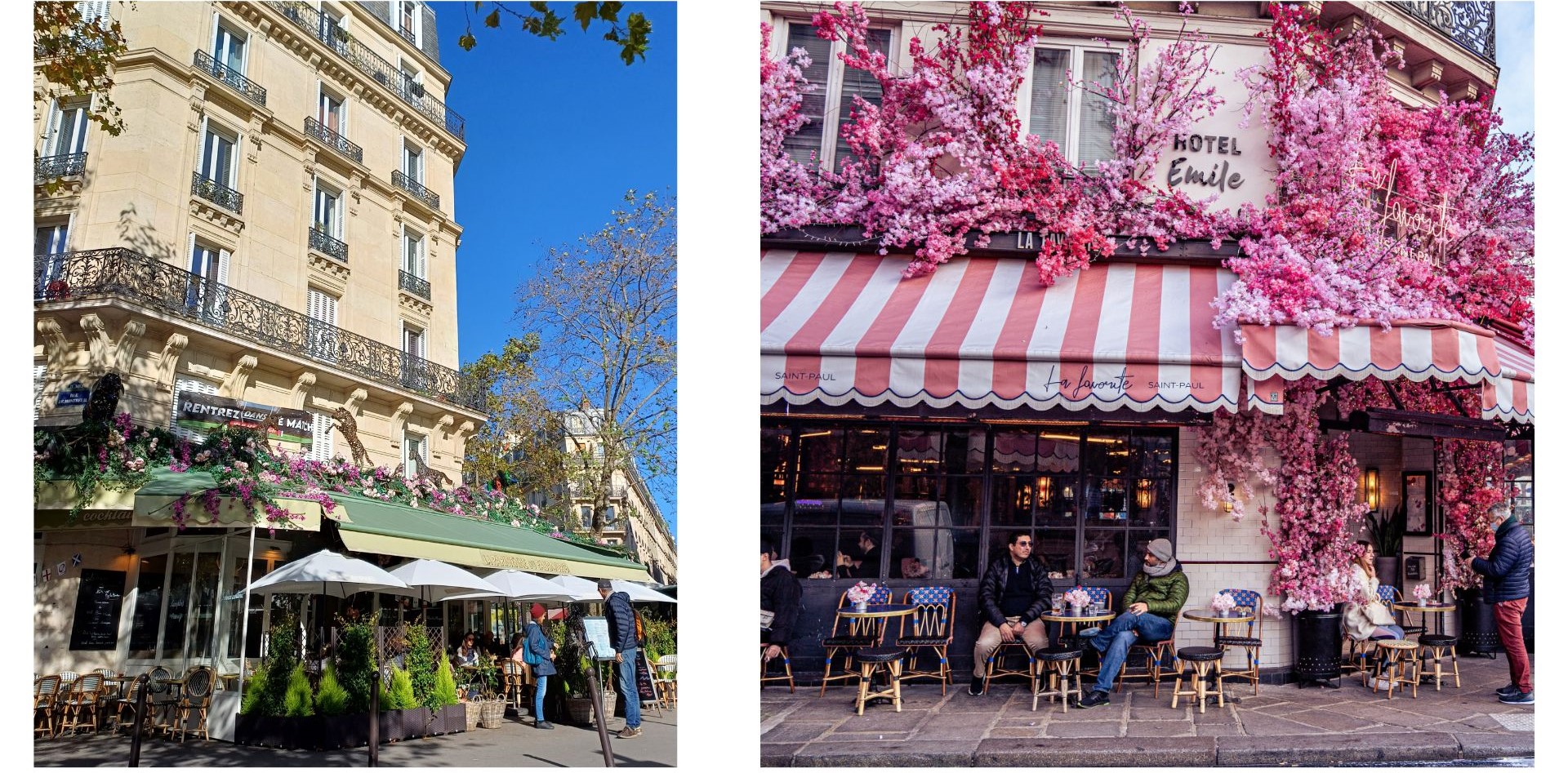
Now, though, we’d like to give you a few suggestions for living it like a local in spots that you otherwise might not even notice. Regular injections of the thick black liquid are de rigueur throughout the day for any self-respecting Parisian. These same spaces are where people are also likely to have an early tartine (usually baguette cut in half and sliced lengthwise, served with butter and jam) with a café crème (don’t call it café au lait), a mid-morning casse-croûte (snack), steak-frîtes at lunch, followed by – you guessed it – a café expresso, and even a quick drink with colleagues after work before heading home. These are multi-use spaces with broad slices of demographic diversity. Sometimes the café on the corner is where business is conducted (while filming Marie Antoinette, Sophia Coppola roosted on the upper level of the Café de Flore, holding production meetings there). It is where lovers – licit or secret – meet to converse and canoodle. It is where students gather after a grueling day of lectures and exams.
A seat en terrasse is always the most coveted, and for good reason. It’s where all the best seeing-and-being-seen takes place. Keep in mind, though, that the French don’t share the squeamishness over smoking that is common to North Americans. Even those who don’t smoke understand that outdoor seating is where the cigarettes are. It is perfectly normal and perfectly acceptable. What isn’t normal or acceptable is making faces, uttering disapproving growls, or requesting neighbors to refrain from smoking. In fact, that is considered unpardonably rude. If you want to avoid the smoke, better to take a table inside.
Here are a few of our faves…
CAFÉ CHARLOT - 38 Rue de Bretagne (Marais)
As with most cafés in Paris, this is not just for a cup o’ Joe. It’s for eating, drinking and generally being merry. At the Charlot, you’ll be ensconced between young fashionistas. There is no lack of hip and oh-so-casually-cool women with huge handbags and gigantic black sunglasses. But if you want a taste of what’s happening right now, this is the place to go.
CAFÉ DE L’INDUSTRIE – 16, Rue St Sabin (Bastille)
A real retro experience, walking into the Café de l’Industrie is a step back into the 20s. Eclectic and ever interesting, the inviting lighting, the cozy rugs scattered throughout, flashback knick-knacks, ubiquitous palm fronds and a background of groovy jazz concoct a treat for the senses at any time of the day, morning to evening.
SIP BABYLONE – 46, Boulevard Raspail (Saint-Germain)
The Sip is just a fifteen-minute southwest walk from the famed Café de Flore, but it’s a world away. This may be a fairly upscale neighborhood, but it is a proper neighborhood, and this is a proper neighborhood café-brasserie. Here you’ll lose the sense of being an international traveler (which is a wonderful thing to be indeed!) and feel, for just a little while, what it’s like to be a resident of the quarter. Relax and read a book (or at least pretend to) as you soak in the local life, including kids playing in the enchanting diminutive park in the Square Boucicaut across the street.
LA ROSE DE FRANCE 24, Place Dauphine (Île de la Cité)
A sweet surrender to the voluptuous luxury of life in Paris, La Rose de France is tucked into a miraculous space, one that seems impossible right in the very center of the city’s beating heart. At the opposite end of the island from the cathedral of Notre-Dame, Place Dauphine is a quiet haven where on a fine day people play pétanque, the ancient game of skillfully-tossed metal balls. You’ll find dapper gentlemen reading their newspapers (yes, actual paper ones) and grandes dames surveying the space as they chit and chat. Young lovers entangled in each other’s arms and old lovers communicating telepathically as they appear to be focused on other things entirely. The perfect place to sit and savor a Parisian expresso in a quintessentially Parisian space.
